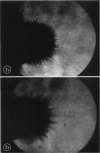Abstract
Dielectrophoresis, the motion produced by the action of nonuniform electric field upon a neutral object, is shown to be a simple and useful technique for the study of cellular organisms. In the present study of yeast (Saccharomyces cerevisiae) using a simple pin-pin electrode system of platinum and high-frequency alternating fields, one observes that the collectability of cells at the electrode tip, i.e. at the region of highest field strength, depends upon physical parameters such as field strength, field uniformity, frequency, cell concentration, suspension conductivity, and time of collection. The yield of cells collected is also observed to depend upon biological factors such as colony age, thermal treatment of the cells, and chemical poisons, but not upon irradiation with ultraviolet light. Several interesting side effect phenomena coincident with nonuniform electric field conditions were observed, including stirring (related to “jet” effects at localized electrode sites), discontinuous repulsions, and cellular rotation which was found to be frequency dependent.
Full text
PDF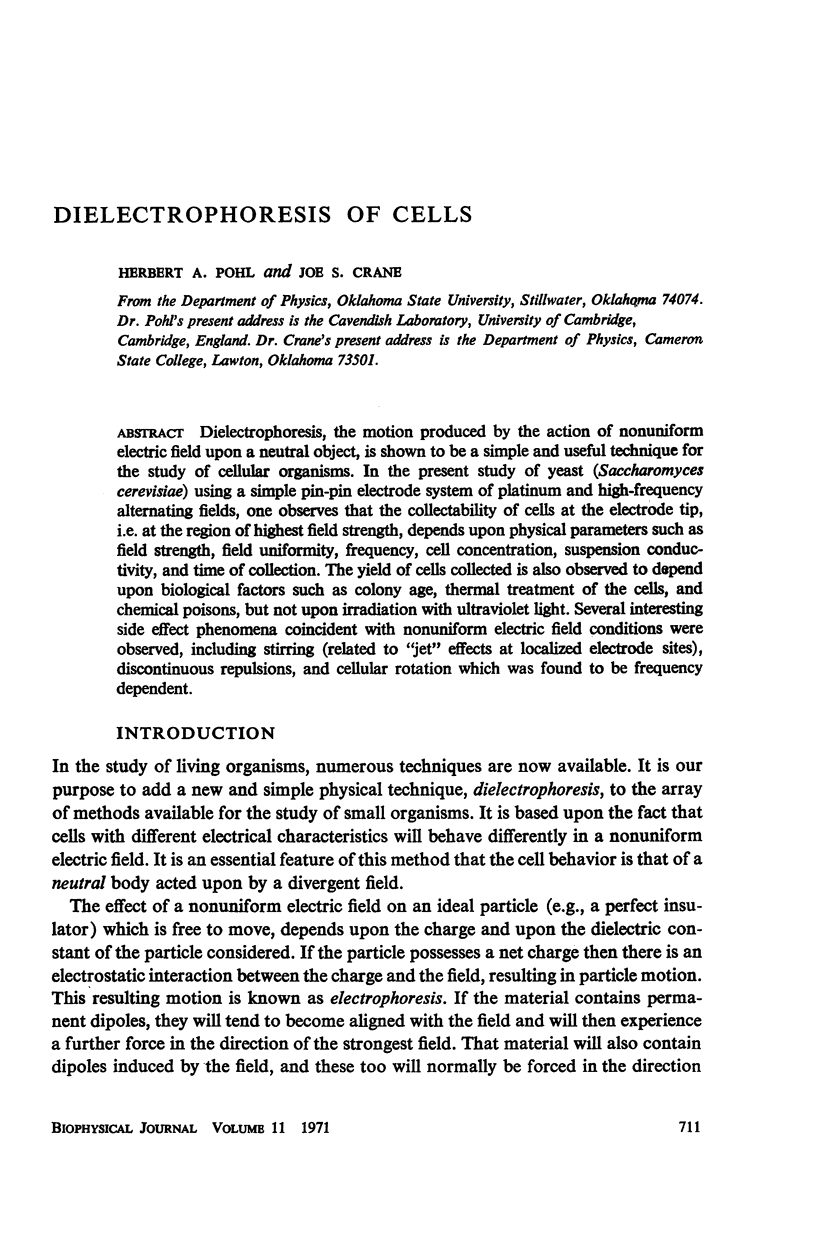
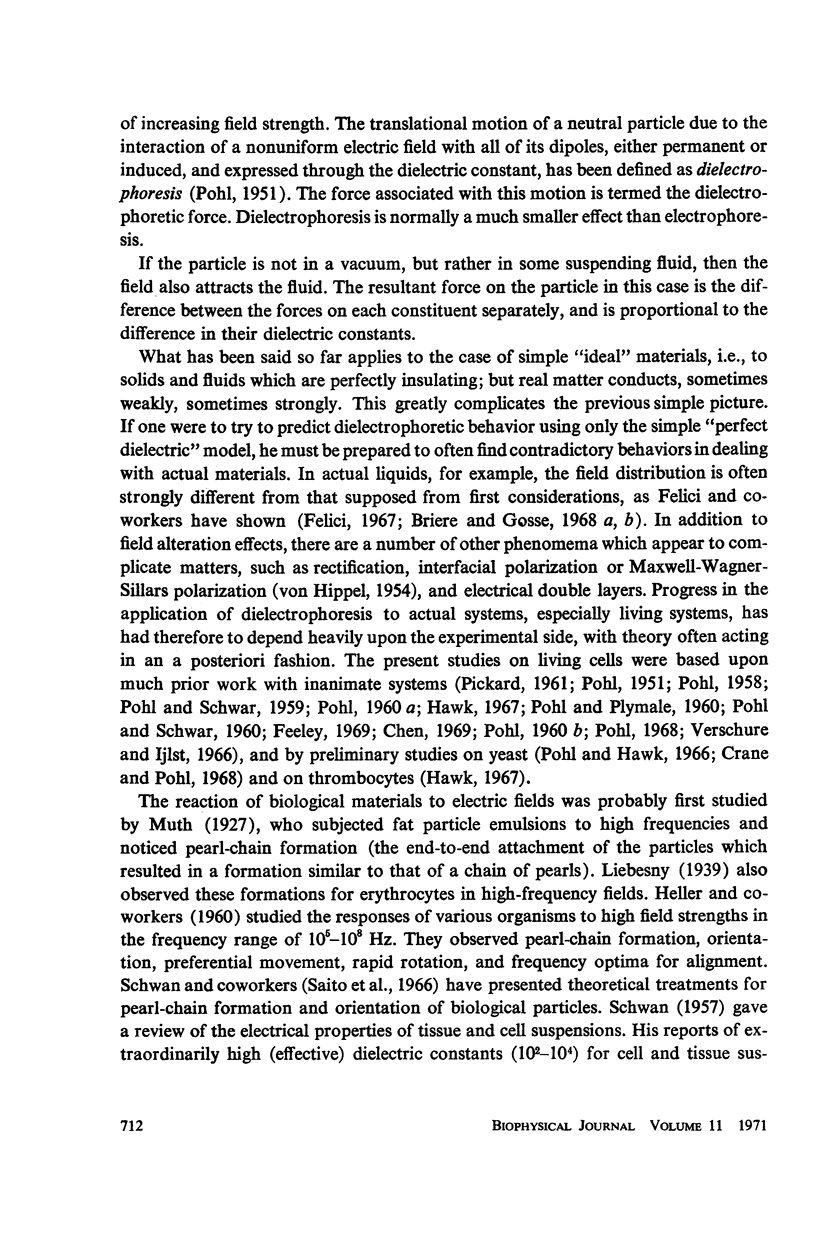
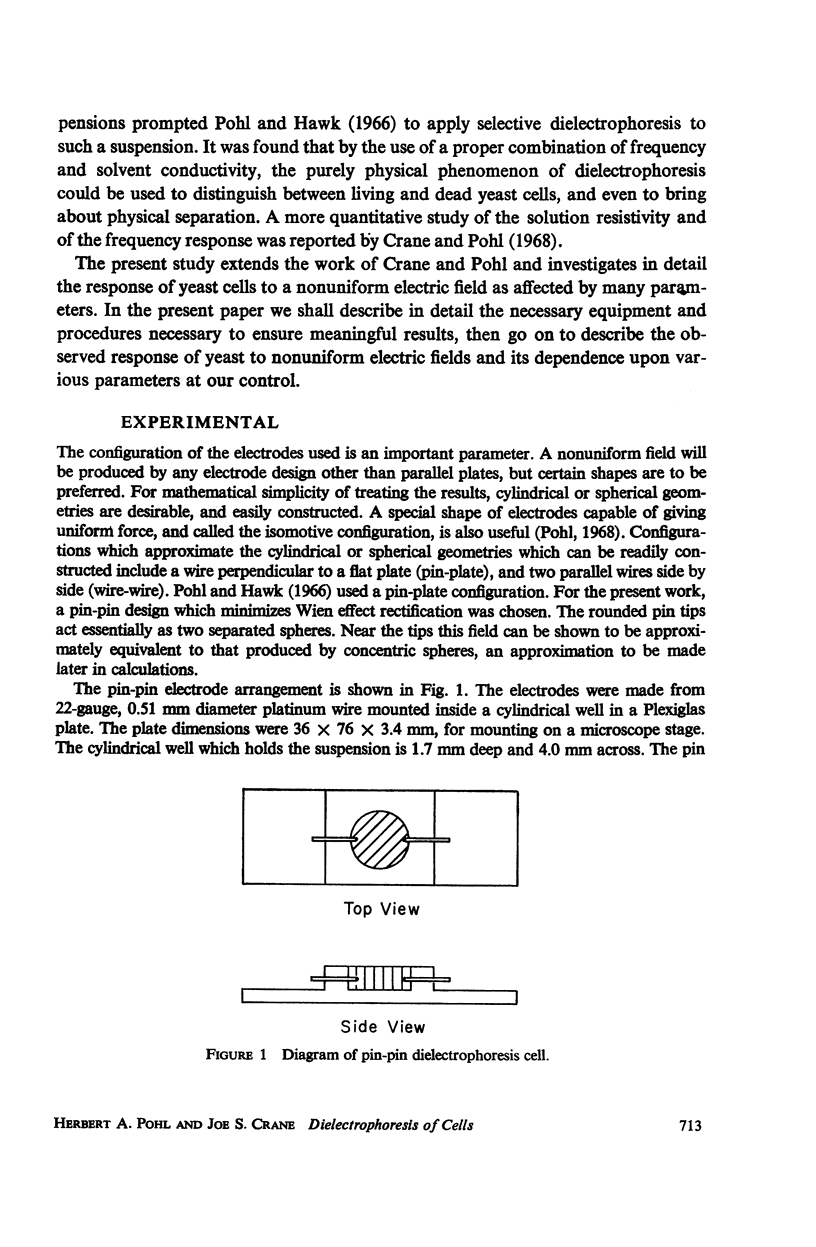

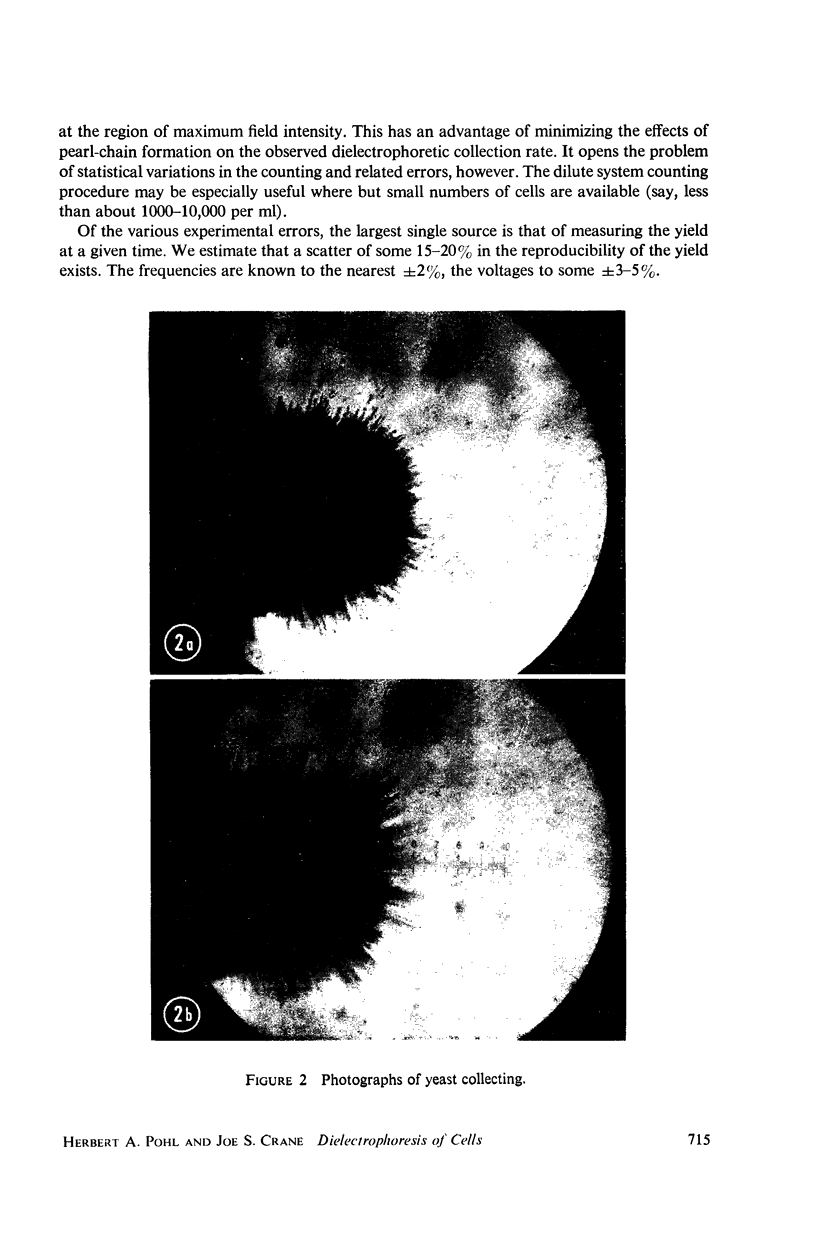
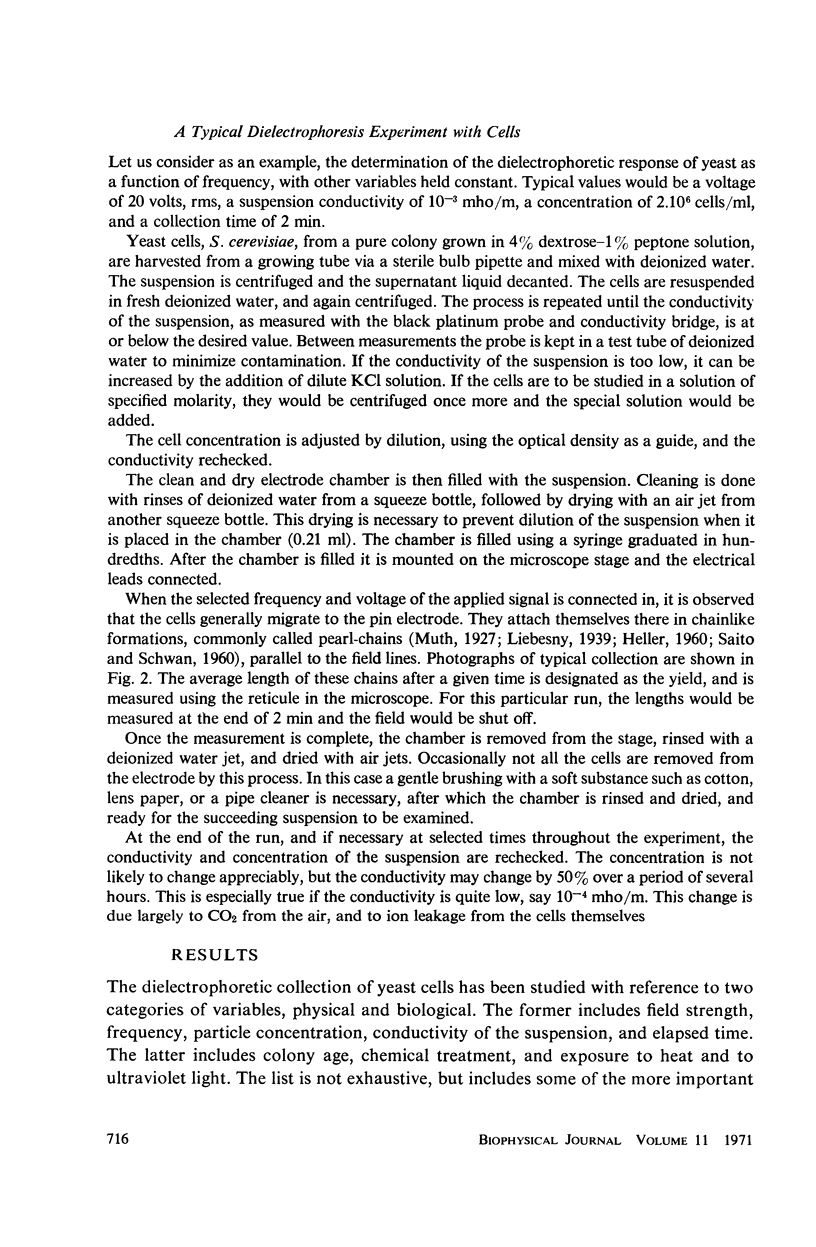


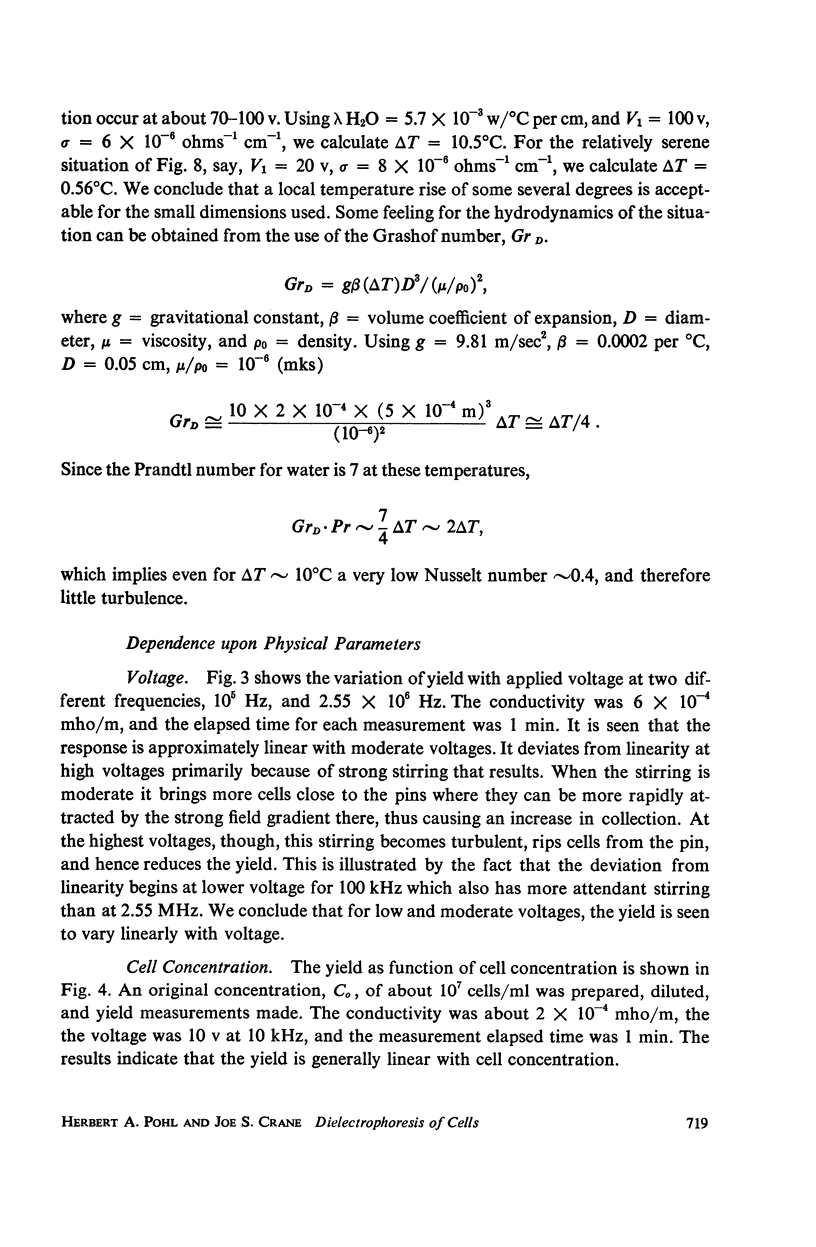
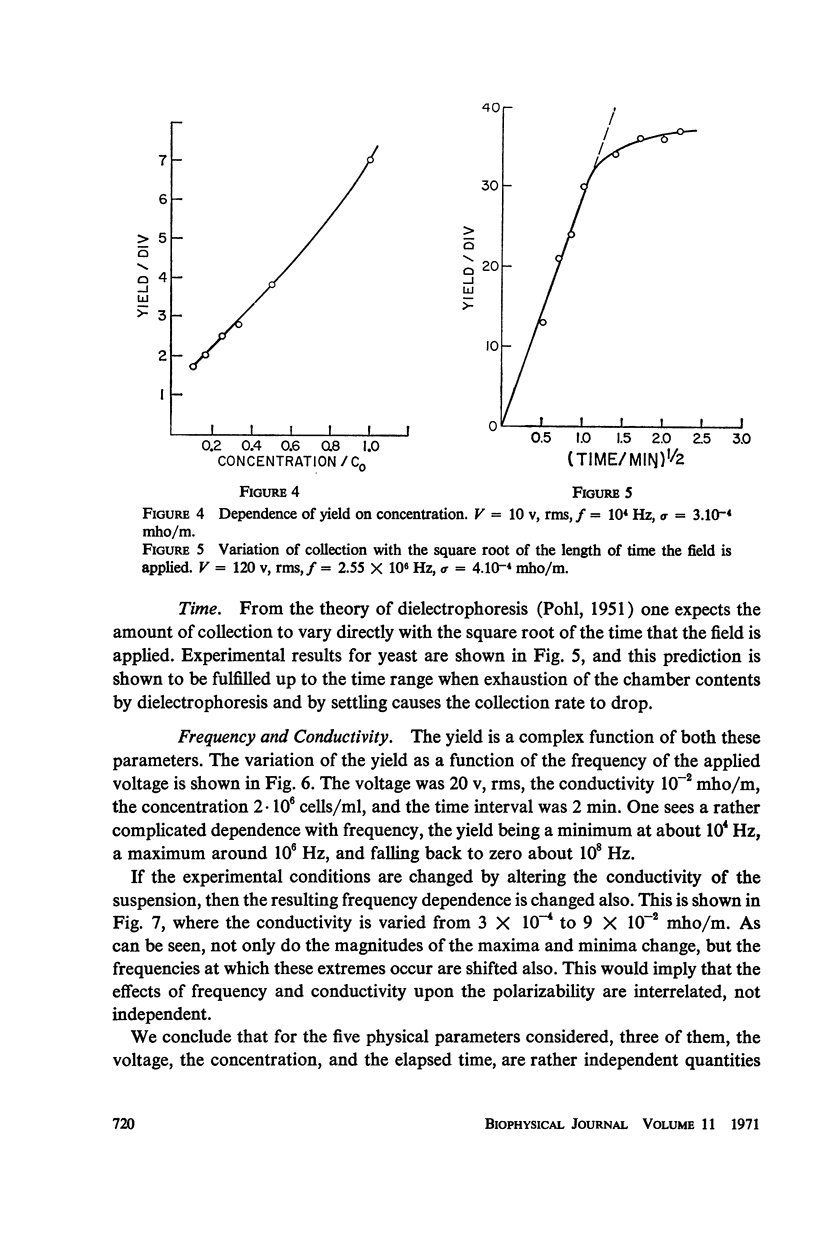
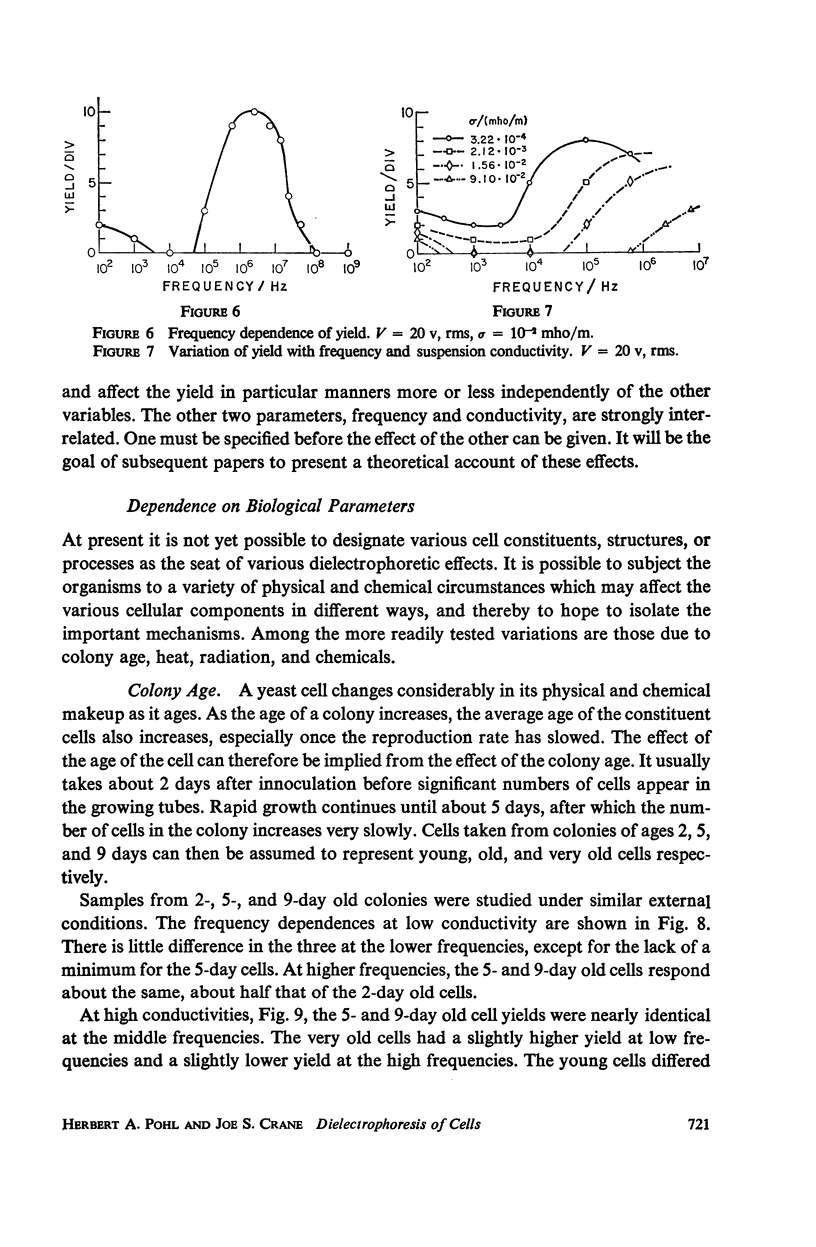
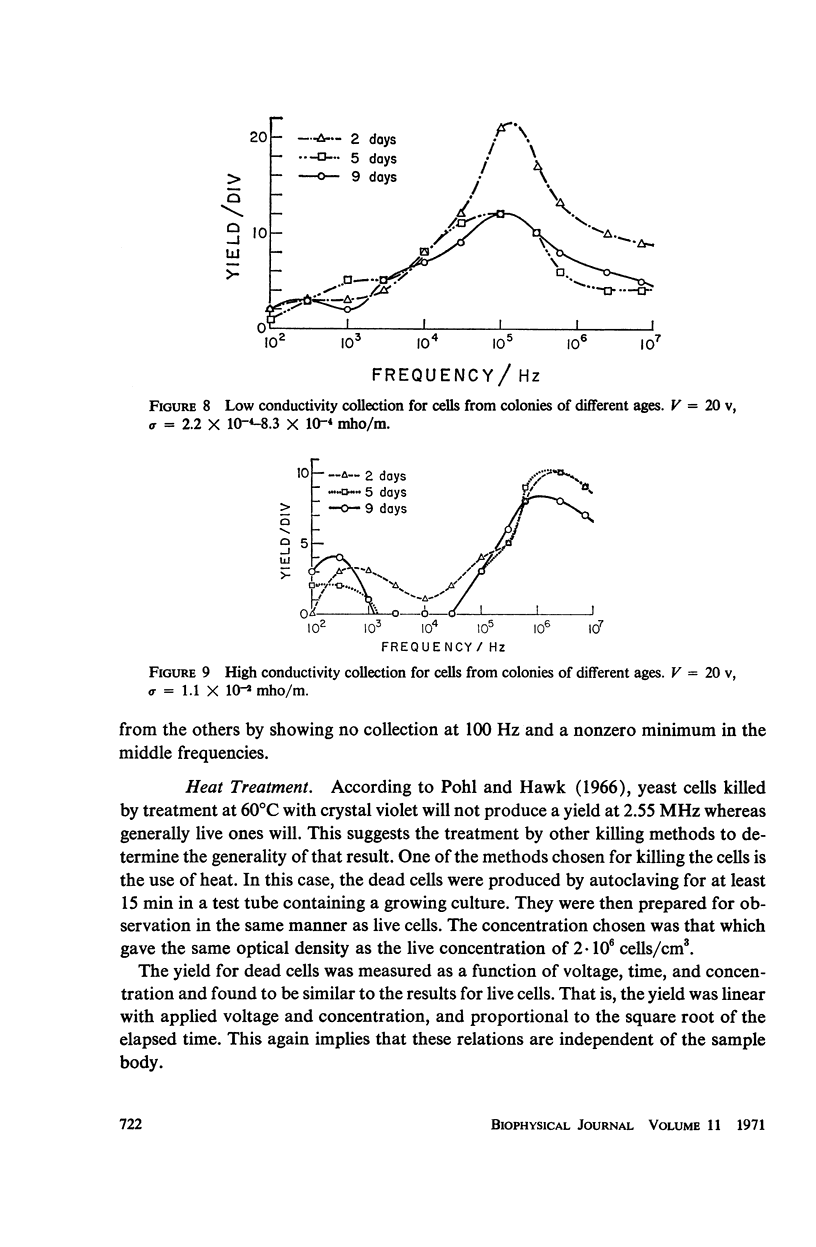
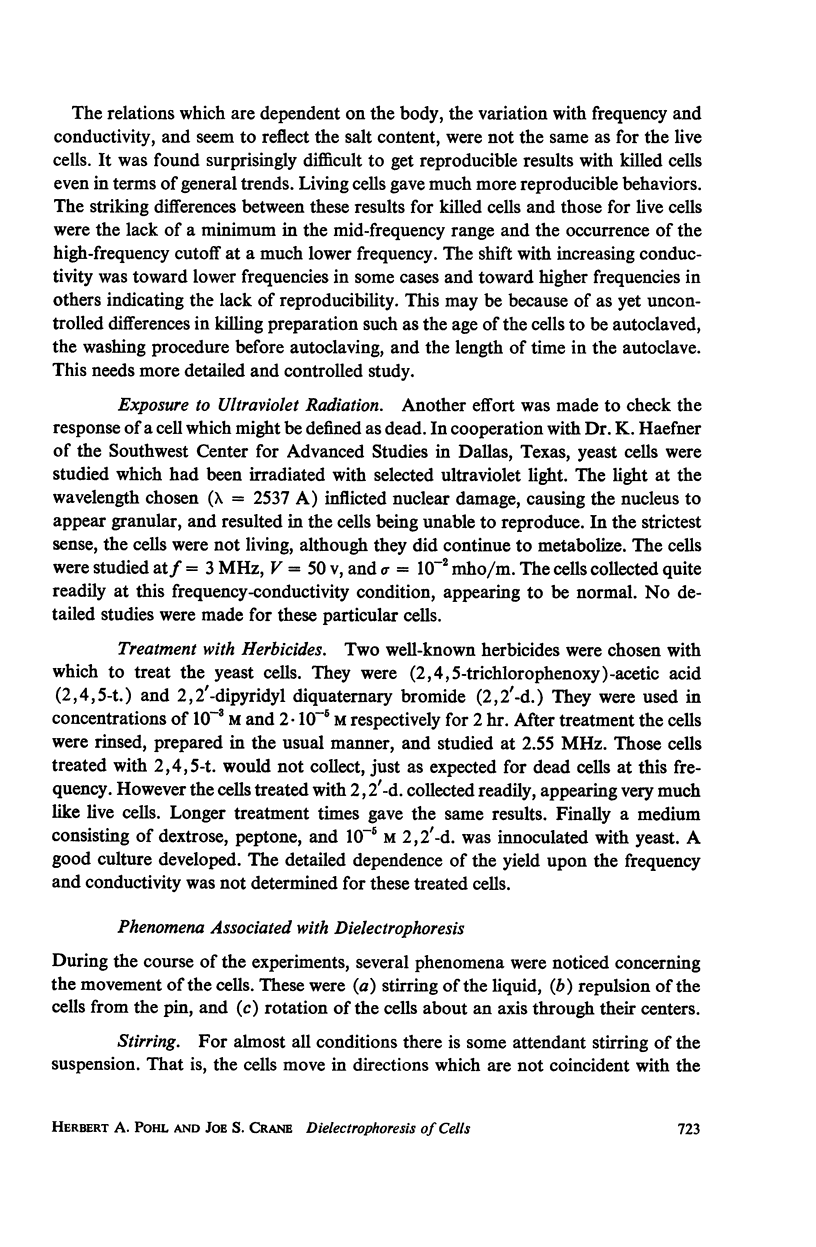

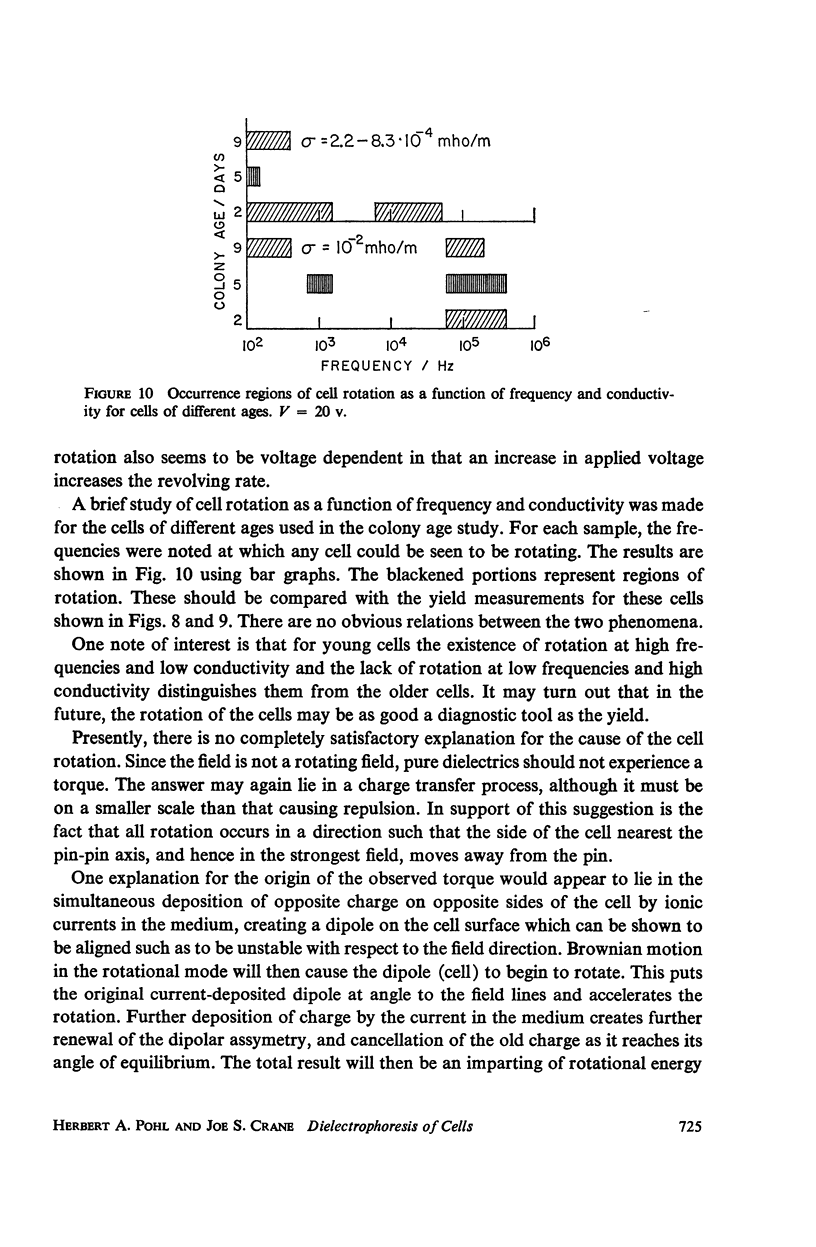
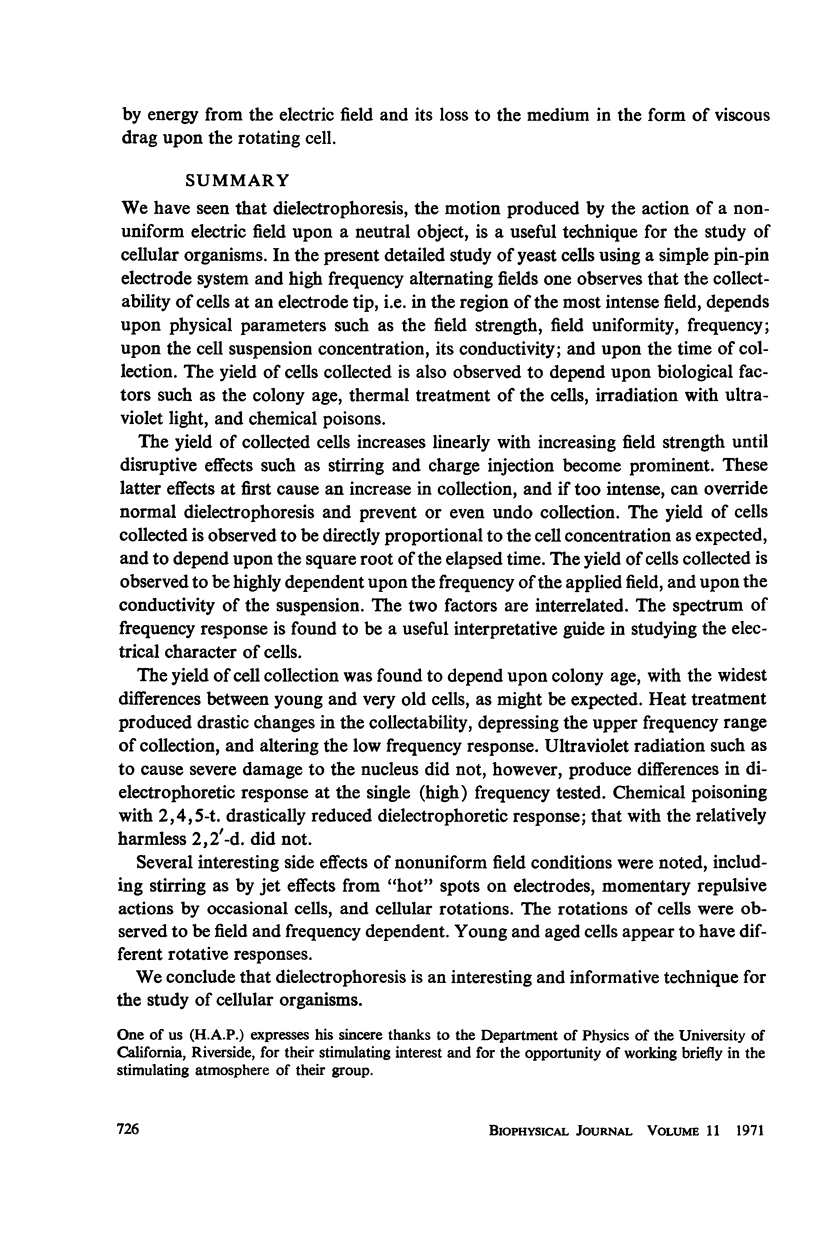
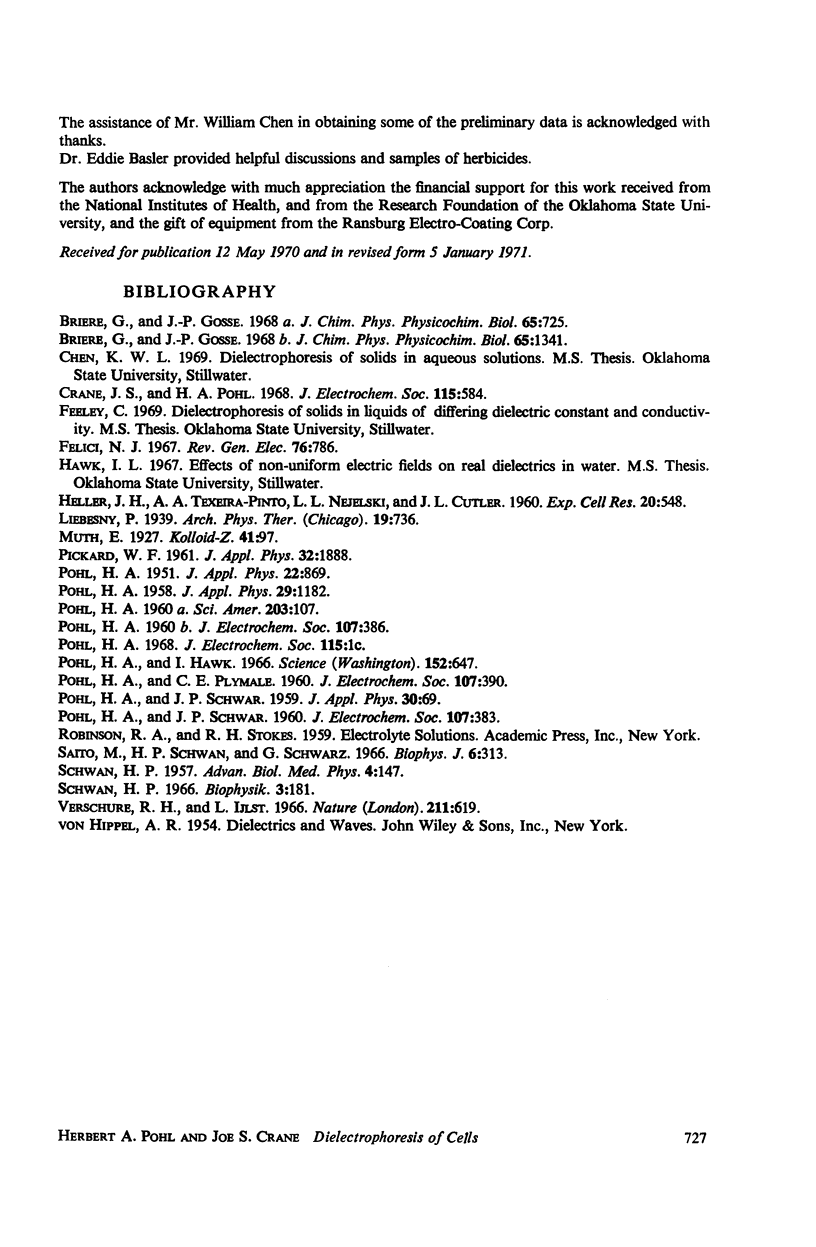
Images in this article
Selected References
These references are in PubMed. This may not be the complete list of references from this article.
- Pohl H. A., Hawk I. Separation of living and dead cells by dielectrophoresis. Science. 1966 Apr 29;152(3722):647–649. doi: 10.1126/science.152.3722.647-a. [DOI] [PubMed] [Google Scholar]
- Schwan H. P. Altenating current electrode polarization. Biophysik. 1966;3(2):181–201. doi: 10.1007/BF01191612. [DOI] [PubMed] [Google Scholar]



